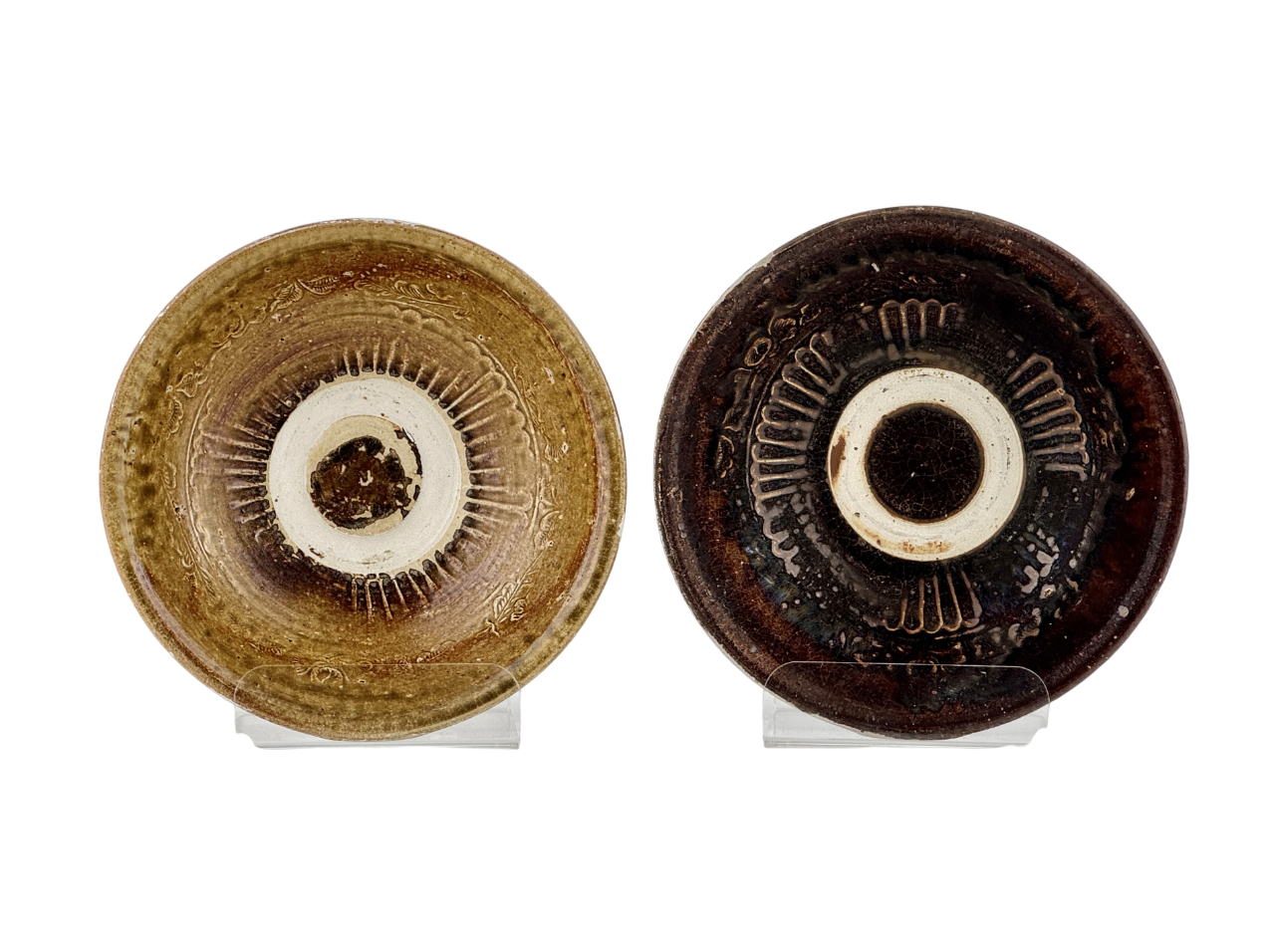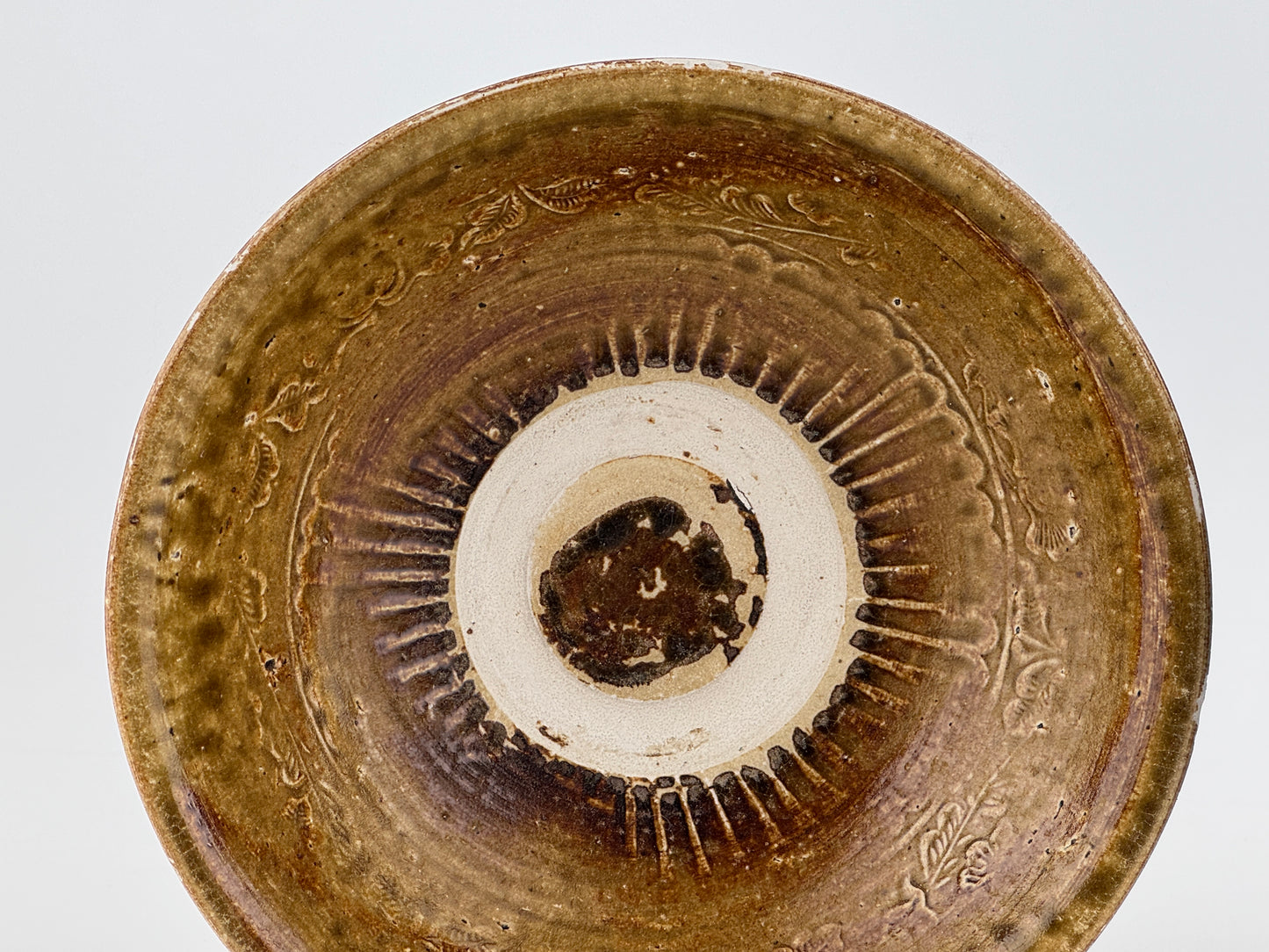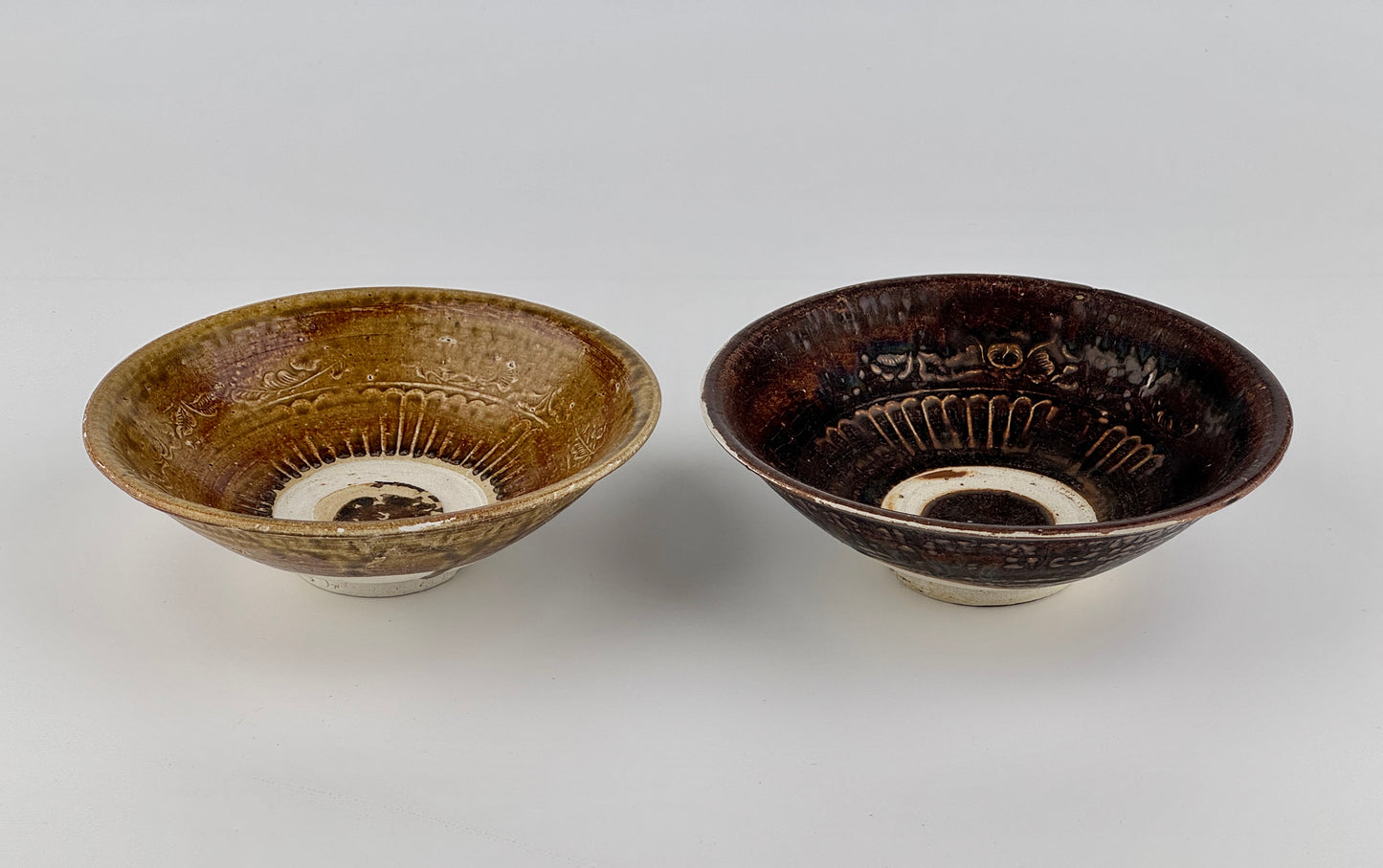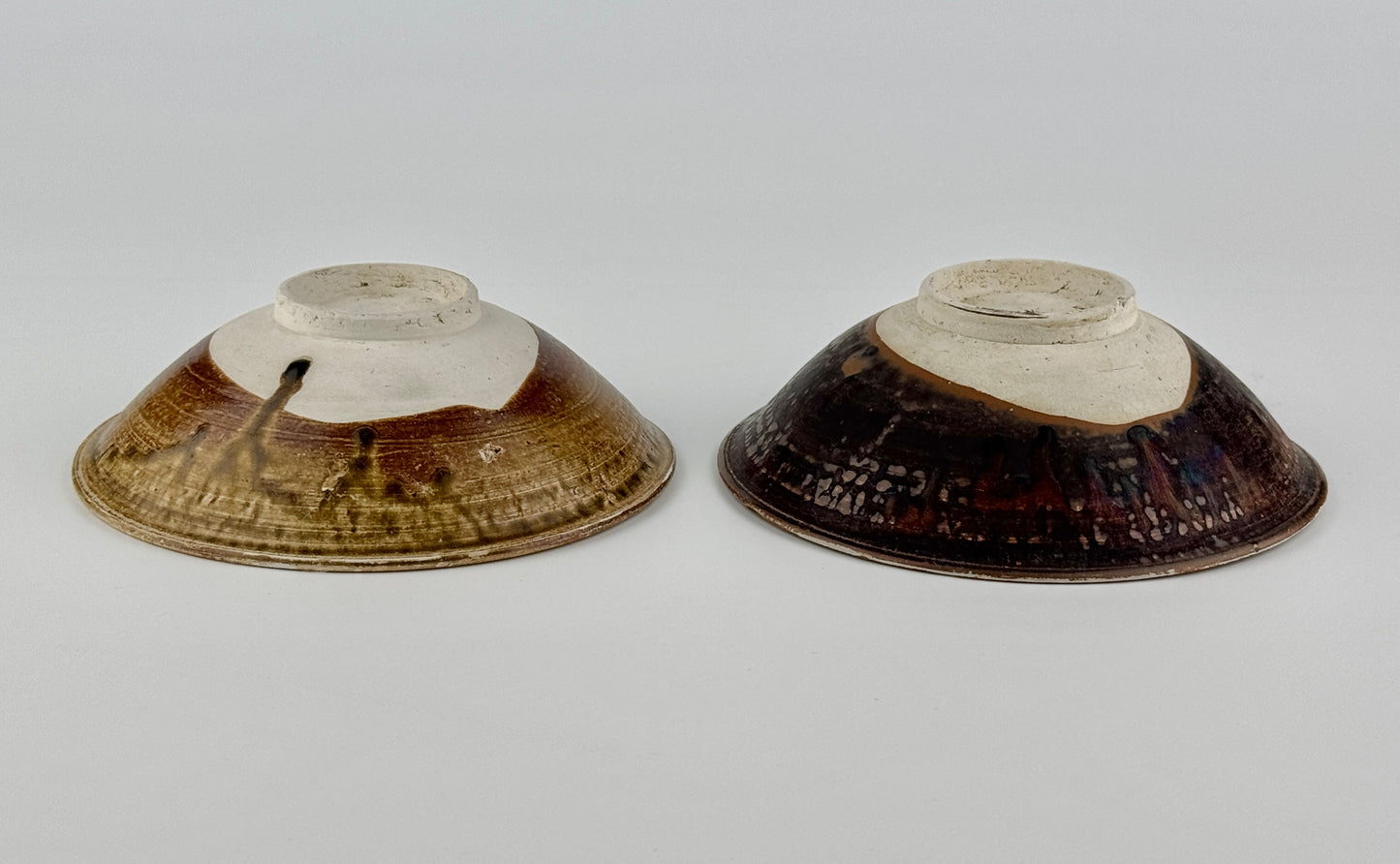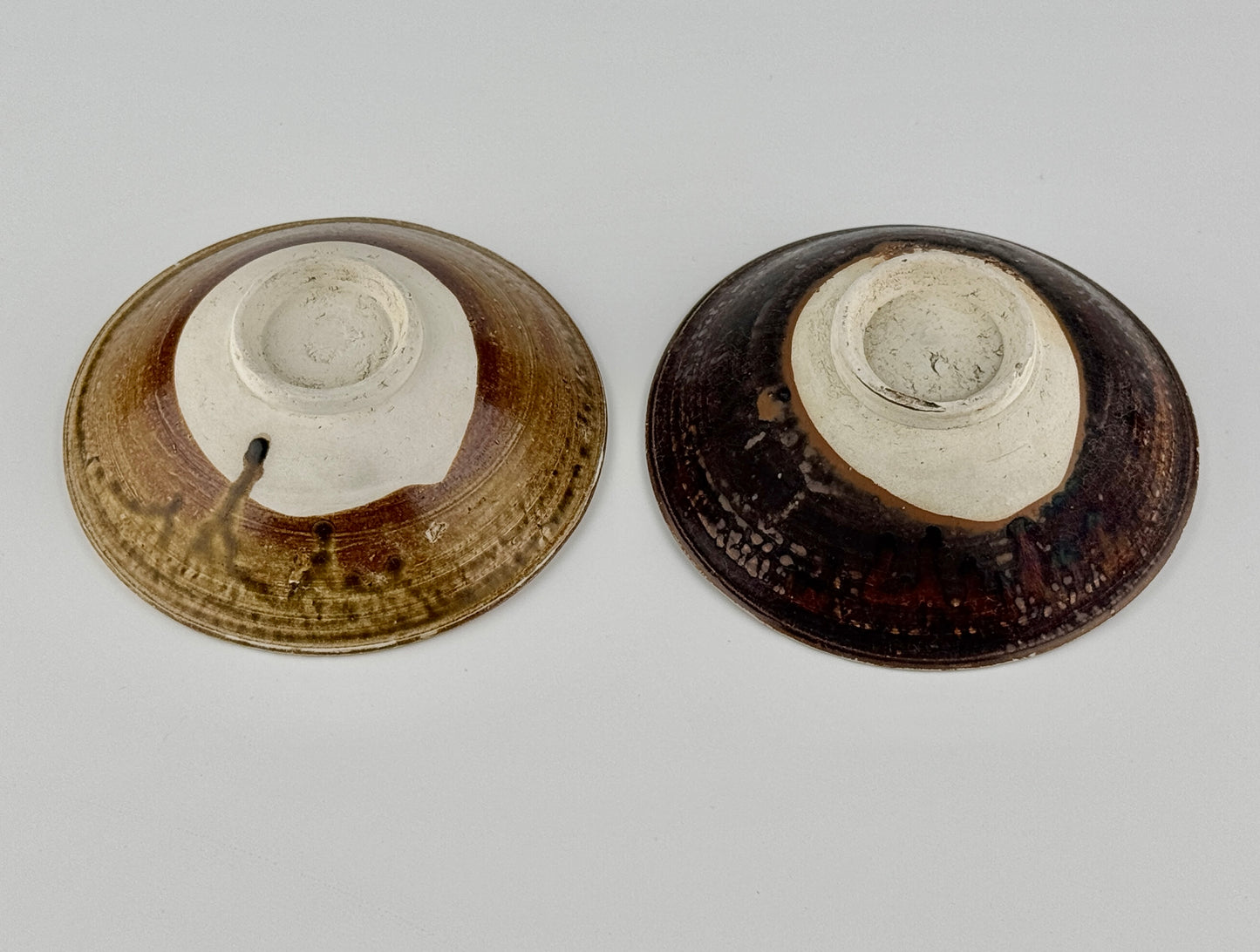Rare Pair of Annamese Stoneware Bowls with Carved Decoration and Brown-Green Glaze Vietnam, 15th Century
Rare Pair of Annamese Stoneware Bowls with Carved Decoration and Brown-Green Glaze Vietnam, 15th Century
Couldn't load pickup availability
This finely matched pair of Annamese stoneware bowls exemplifies the refined ceramic artistry of Đại Việt (medieval Vietnam). Each bowl is delicately potted with gently flaring sides and a raised foot, showcasing a harmonious balance of form and function.
The interiors are richly decorated with incised and combed motifs radiating from a central medallion, encircled by a band of scrolling floral or foliate designs. One bowl is glazed in a warm olive-brown hue, while the other features a deep, lustrous iron-brown glaze—both with subtle iridescence and natural kiln effects, characteristic of Annamese high-fired ceramics. The exposed unglazed footrings reveal a buff-colored stoneware body.
These bowls reflect the influence of Chinese Song and Yuan dynasty ceramics, while retaining a distinctly local aesthetic. They were likely used for ceremonial or export purposes, and pieces of this kind were highly prized across Southeast Asia and beyond.
Dates : 15th century Vietnam
Medium : Olive-green glaze
Type : Bowl
Found/Acquired : Southeast Asia , South China Sea, Hoi An Ship
Diameter : 15.5cm(Diameter) x 5cm(Height)
Reference : Double checked with reference to the original catalogue
Butterfield Treasures Hoi An Hoard Auction Catalogs / San Francisco Butterfields 2000
* Vietnamese trade ceramics
Around the mid-14th century, Vietnam developed its ceramics production technology by producing blue and white porcelain, and began to export it overseas. During this period, China Ming Dynasty implemented a policy of lifting the ban from 1371 to 1657 and restricted foreign trade. This served as a good opportunity in the trade history of Vietnamese ceramics, and ceramic exports boomed from the late 15th to the 16th century, expanding sales channels not only to Southeast Asia but also to Japan, the Middle East, and several European countries.
During 15~16th century, Vietnam's international trade policy became much more liberal than in the past. In northern Vietnam, commerce became more active as markets were formed around ports, riverine ports, and handicraft villages. This led to the emergence of many large commercial centers such as Phố Hiến, Thăng Long and Hội An.
Through this, Vietnam's international trade and economy also grew significantly. In the above commercial area, stores of European merchants from the Netherlands, England, France, and Portugal were opened and operated. Merchants from many countries around the world entered Vietnam and engaged in intermediate trade.
